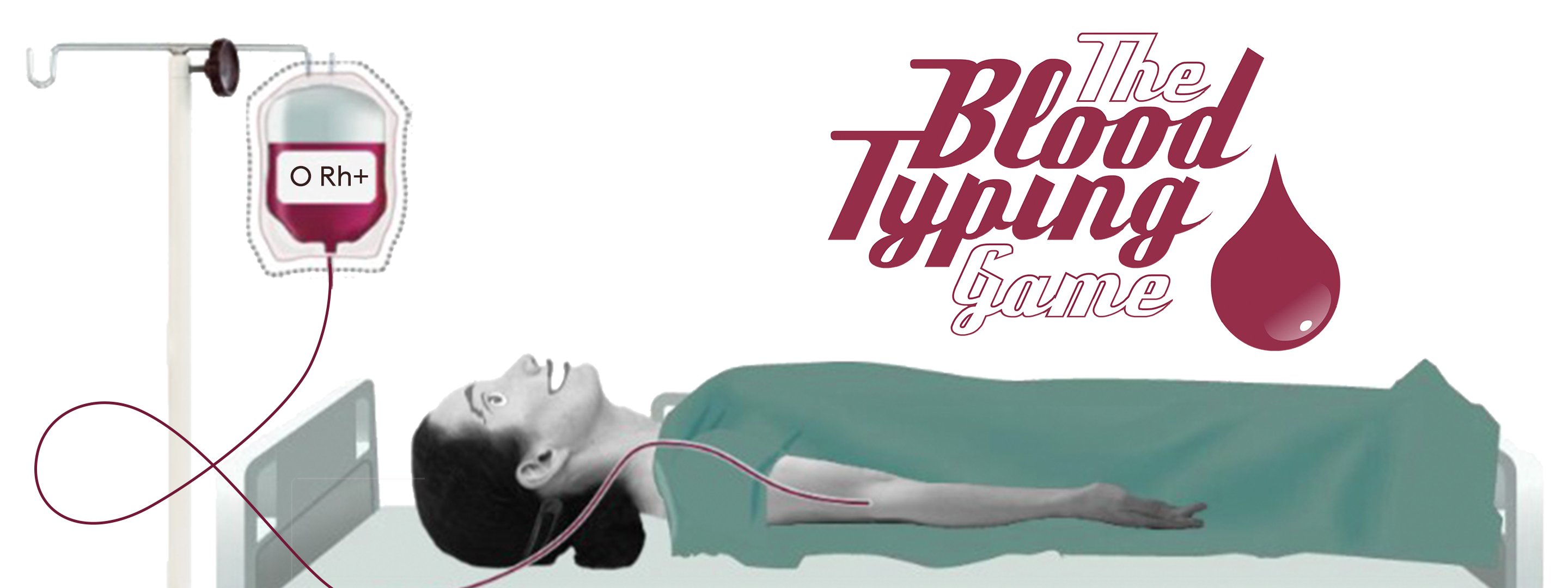
Tutorial 3
How do you perform safe blood transfusions?
A blood transfusion involves taking blood from one person (a donor) and giving it to another to replace blood lost in major accidents, or during life-saving operations, for instance. In order to make safe blood transfusions it is important to know to what blood type the patient belong to. Mixing incompatible blood types could be dangerous and lethal. Early blood transfusions consisted of whole blood, but modern medical practice commonly uses only components of the blood, such as red blood cells or plasma. If you have lost blood due to an injury or surgery red blood cells are the most commonly transfused part of the blood. Red blood cells are also used for transfusion if you have anemia (uh-NEE-me-uh).
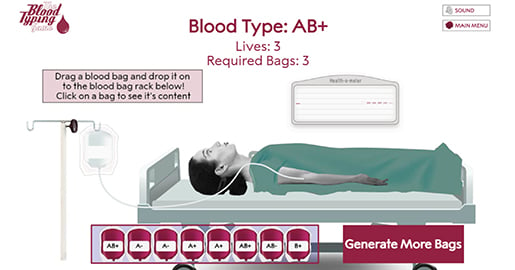
Blood transfusion is the process of receiving blood products into one's circulation. Transfusions are usually given through a tiny tube that is inserted into a vein with a small needle.
What happens if you get the wrong blood in a transfusion?
Immunological reactions occur when the receiver of a blood transfusion has antibodies that work against the donor blood cells. Then the red blood cells from the donated blood will clump, or agglutinate. The agglutinated red cells can clog blood vessels and stop the circulation of the blood to various parts of the body. The agglutinated red blood cells can also crack open, leaking toxic contents out in the body, which can have fatal consequences for the patient.
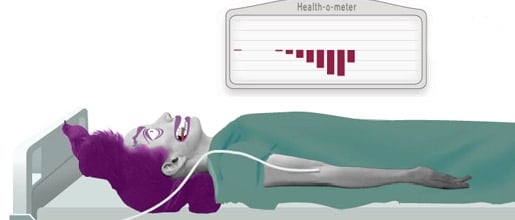
Compatible blood
For a blood transfusion to be successful, AB0 and Rh blood groups must be compatible between the donor blood and the patient blood. You primarily try to give the same blood type as the patient herself/himself has got. However, some blood types could be rare in different parts of the world or hospitals might be out of stock with a particular blood type. Therefore you need to know which blood types are “compatible”, that is which other blood types fit a patient with a certain blood type.
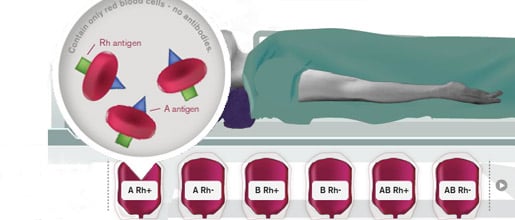
For example, a person with blood type B Rh- has got A and Rh antibodies and cannot receive a blood transfusion with red blood cells which have A and Rh antigens like A Rh+ or AB Rh+.
What happens when blood clumps or agglutinates?
If the blood is not compatible in a blood transfusion,then the red blood cells from the donated blood will clump or agglutinate. The agglutinated red cells can clog blood vessels and stop the circulation of the blood to various parts of the body. The agglutinated red blood cells may also crack and their contents leak out in the body. The red blood cells contain hemoglobin which becomes toxic when outside the cell. This can have fatal consequences for the patient.
The antibodies' task is to act against foreign substances in the body. To a person with B blood the A antigens is considered foreign. The A antigen and the A antibodies can bind to each other in the same way that the B antigens can bind to the B antibodies. This is what would happen if, for instance, a B blood person receives blood from an A blood person. The red blood cells will be linked together, like bunches of grapes, by the antibodies. As mentioned earlier, this clumping could lead to death.
Who can receive blood from whom?
People can happily receive blood from the same blood type as their own, but they have antibodies against any antigens not found on their own red blood cells. Look at the "Compatible blood chart" below!
ABO blood system
O can only receive blood from: O
A can receive blood from: A and O
B can receive blood from: B and O
AB can receive blood from: AB, A, B and O
Rh blood system
Rh+ can receive blood from: Rh+ and Rh-
Rh- can receive blood from: Rh-
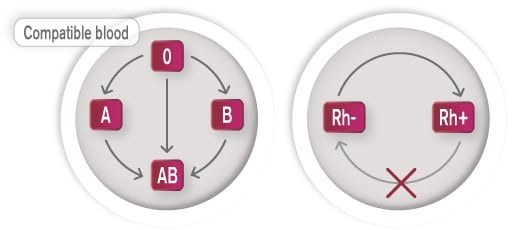
This "Compatible blood chart" refers to blood transfusions with red blood cells.
People with O Rh- blood can only receive O Rh- blood.
People with O Rh+ can receive both O Rh+ and O Rh- blood.
People with blood type AB Rh+ can recieve blood from all blood types and therefore are called Universal receivers.
What if there is no time for blood typing?
In emergencies, there are exceptions to the rule that the donor's blood type must match the recipient's exactly. Blood type O Rh- is the only type of blood that people of all other blood types can receive, so it is used in situations when patients need a transfusion but their blood type is unknown. People with blood type O Rh- are called Universal donors.
Blood Type |
Antigens |
Antibodies |
Can donate red blood cells to |
Can receive red blood cells in a transfusion from |
| AB Rh+ | A, B and Rh | None | AB Rh+ |
AB Rh+ AB Rh - A Rh+ A Rh - B Rh+ B Rh - O Rh+ O Rh - |
| AB Rh - | A and B | None |
AB Rh - AB Rh+ |
AB Rh - |
| A Rh+ | A and Rh | B | A Rh+ AB Rh+ |
A Rh+ A Rh - O Rh+ O Rh - |
| A Rh - | A | B |
A Rh - A Rh+ AB Rh - AB Rh+ |
A Rh - O Rh - |
| B Rh+ | B and Rh | A | B Rh+ AB Rh+ |
B Rh+ B Rh - O Rh+ O Rh- |
| B Rh - | B | A |
B Rh- B Rh+ AB Rh- AB Rh+ |
B Rh - O Rh - |
| O Rh+ | Rh | A and B | O Rh+ A Rh+ B Rh+ AB Rh+ |
O Rh+ O Rh - |
| O Rh - | None | A and B | AB Rh+ AB Rh - A Rh+ A Rh - B Rh+ B Rh - 0 Rh+ 0 Rh - |
O Rh - |
Be a blood donor!
Blood donors must be at least 17-18 years old in most countries.
Disclaimer:
The fact that people with Rh- blood do not naturally have Rh antibodies in their blood plasma (as one can have A or B antibodies, for instance) is not taken into consideration in this game. In reality a person with Rh- blood can develop Rh antibodies in the blood plasma if he or she receives blood from a person with Rh+ blood. The received blood cells with Rh antigens can trigger the production of Rh antibodies in an individual with Rh- blood. In the game one has to pretend that all patients with Rh- blood type has received Rh+ blood in previous blood transfusions.
Also, the antibodies are here referred to as A antibodies, B antibodies and Rh antibodies. These are also commonly referred to as anti A antibodies, anti B antibodies, and anti Rh antibodies.
NOTE: A person with blood type O Rh- blood is considered to be a "universal donor", which means that any person, regardless what blood type you belong to, could receive O Rh- blood in a transfusion, for instance in an emergency situation when there is no time for blood typing. Recent research indicates that this may no longer be totally accurate, because of a better understanding of the complex issues of immune reactions related to incompatible donor blood cells.
MLA style: "The Blood Typing Game - Tutorial 3: How do you perform safe blood transfusions?". Nobelprize.org. Nobel Prize Outreach AB 2022. <http://nobel-external-educationalgames-app.azurewebsites.net/educational/medicine/bloodtypinggame/gamev3/3.php>